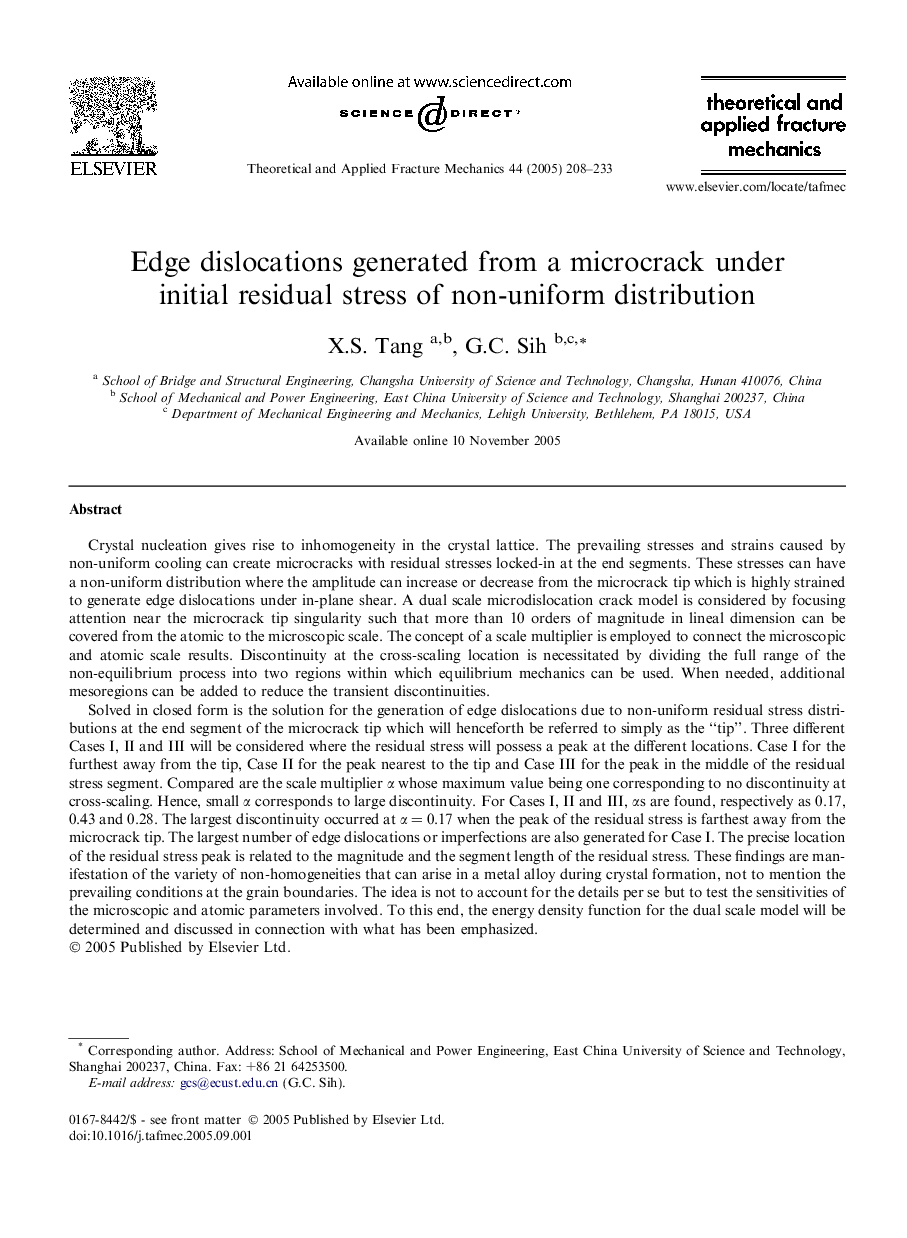| Article ID | Journal | Published Year | Pages | File Type |
|---|---|---|---|---|
| 10421009 | Theoretical and Applied Fracture Mechanics | 2005 | 26 Pages |
Abstract
Solved in closed form is the solution for the generation of edge dislocations due to non-uniform residual stress distributions at the end segment of the microcrack tip which will henceforth be referred to simply as the “tip”. Three different Cases I, II and III will be considered where the residual stress will possess a peak at the different locations. Case I for the furthest away from the tip, Case II for the peak nearest to the tip and Case III for the peak in the middle of the residual stress segment. Compared are the scale multiplier α whose maximum value being one corresponding to no discontinuity at cross-scaling. Hence, small α corresponds to large discontinuity. For Cases I, II and III, αs are found, respectively as 0.17, 0.43 and 0.28. The largest discontinuity occurred at α = 0.17 when the peak of the residual stress is farthest away from the microcrack tip. The largest number of edge dislocations or imperfections are also generated for Case I. The precise location of the residual stress peak is related to the magnitude and the segment length of the residual stress. These findings are manifestation of the variety of non-homogeneities that can arise in a metal alloy during crystal formation, not to mention the prevailing conditions at the grain boundaries. The idea is not to account for the details per se but to test the sensitivities of the microscopic and atomic parameters involved. To this end, the energy density function for the dual scale model will be determined and discussed in connection with what has been emphasized.
Related Topics
Physical Sciences and Engineering
Engineering
Mechanical Engineering
Authors
X.S. Tang, G.C. Sih,
